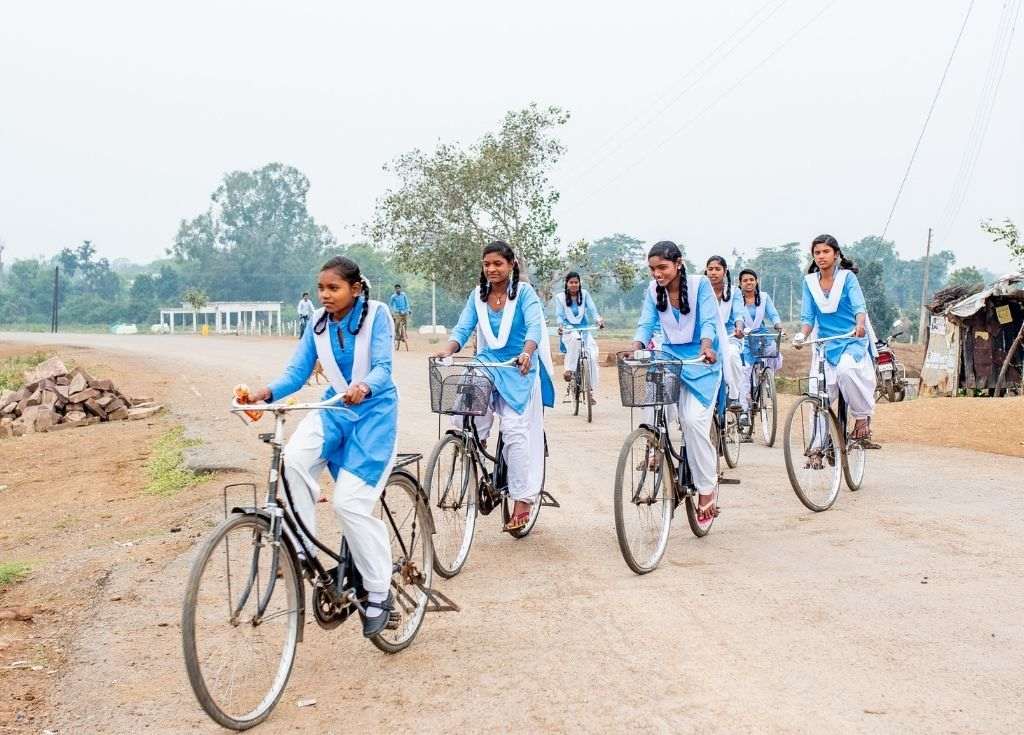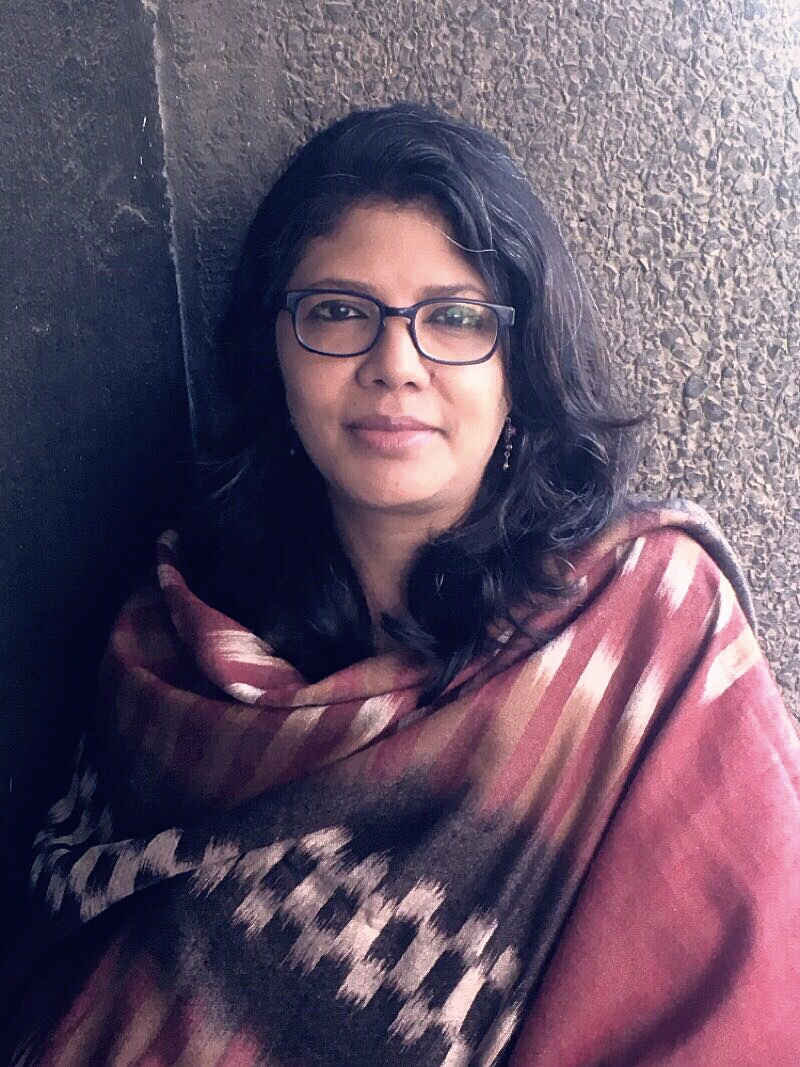Marriage in adolescence denies young women and girls their agency as it is associated with early pregnancy, maternal and child mortality, intimate partner violence, and intergenerational poverty. India has seen improvements in child marriage levels in the last 20 years, with states such as Rajasthan, Chhattisgarh, and Madhya Pradesh showing the best results. However, persisting gender inequities have stalled progress in curbing child marriage in certain states such as Tripura, West Bengal, and especially Bihar, where more than two out of five women continue to get married early.
From 2015–16 to 2019–20, 10 out of 37 districts in Bihar witnessed an increase in child marriages of girls, with seven districts recording an alarming increment of more than 5 percentage points. Conversely, 11 districts saw reductions of more than 5 percentage points in their early marriage prevalence.1 Given the varied picture this data presented, the Centre for Catalyzing Change’s Sakshamaa Initiative undertook a mixed-methods study2 to understand the dynamics and drivers of early marriage in Bihar—the attitudes of parents and young people, perceived value of education, and norms around young people’s sexuality and choice.

Here are some factors, as discovered by the survey, that contribute to early marriage in Bihar, and some that work to discourage it.
Low schooling
1. Completing less than 10 years in schooling is still the norm in Bihar. The mean educational attainment was low for both girls (7.8 years) and boys (8.3 years). However, more girls (73 percent) than boys (54 percent) wish to rejoin school.
2. The gender gap in schooling widens with age. Compared to 57 percent boys who had completed secondary school and were still attending school, only 32 percent girls were attending school after completing the secondary level.
3. One in three girls drop out of school because they do not find education worthwhile. Lack of economic opportunities for women and in-laws’/parents’ resistance towards educating girls and allowing economic participation discourage girls from seeking an education. Contrarily, the boys who dropped out of school did so for paid work activities.
4. There is a marked gender gap in parents’ aspiration for their children. About 55–57 percent of parents (both fathers and mothers) want to educate their daughters up to higher secondary, while 51–56 percent would want their boys to study up till the master’s level.
5. Marriage before legal age is common for both girls and boys. For girls, the median age of marriage is 17 (+/–2) and for boys it’s 20.8 (+/–2).
6. The likelihood of receiving proposals for marriage declines as the educational attainment of girls increases, but for boys the number of marriage proposals increases significantly with education.
Patriarchal mindsets
1. The patriarchal perspectives of community gatekeepers—such as panchayat representatives, frontline workers, men, and boys—are drivers of early marriage. Dowry is reinforced as an indicator of boys’ worth in the marriage market. Therefore, finding grooms for a younger girl is easier for parents, who are in a position to ‘proudly’ negotiate and ‘bargain’ in such cases.
2. The perceived utility of education is the lowest among community gatekeepers (40.2 out of 100 scored on an index). Parents experience overwhelming societal pressure to prioritise their daughters’ marriage over their education. Gatekeepers believe educating girls is unimportant and burdensome.
3. Attitudes remain discriminatory towards girls’ mobility, agency, and life choices. Adherence to patriarchal norms is highest among married young men (52.3/100) and least among unmarried girls and young women (43.8/100). Unmarried boys also display the highest tendency to control girls’ sexuality and choices (52.6/100).
4. Fathers are primary decision makers on marriage—more than three-fourth married young women and more than two-third married young men said their fathers facilitated their early marriages.
Development, media exposure, and knowledge of schemes
1. Bihar’s Saat Nishchay (or 7 Resolves) programme, implemented in 2015, prioritises the development of rural roads, electricity, and water supply, along with focusing on youth education, skill development, employment, and women’s empowerment. Such rural development can have a transformative influence on gendered aspirations and norms in the following ways:
- A clear association was observed between higher perceived utility of education and participants living in villages with comparatively better development indicators, such as the presence of all-weather roads, proximity to schools, and health centres.
- Those residing in better-developed villages have equal aspirations for their sons and daughters.
- People from relatively more developed villages display a significantly lower tendency to control girls’ sexuality.
2. Greater media exposure (respondents’ engagement with newspapers, magazines, television, radio, mobile phones, internet, and platforms such as Facebook and WhatsApp) has a positive effect on mothers’ perceived utility of education and reduces their tendency to control girls’ sexuality.
3. Bihar has a range of schemes incentivising girls’ education, whether through the provision of bicycles to facilitate mobility, stipends to buy uniforms, or a conditional cash transfer scheme guaranteeing payout after completing school. Respondents with prior knowledge of these existing government schemes are more likely to have a higher perceived utility of education and hold progressive beliefs towards the age of marriage.
JEEViKA self-help groups (SHGs)
Launched in 2006, the Bihar Rural Livelihoods Promotion Society, or JEEViKA, builds women’s community institutions in the form of SHGs. Through its network of 1.06 million SHGs, it has strengthened the financial status of women in rural Bihar. Moreover, as women occupy public spaces and participate in political, financial, and civic processes, their capacity to challenge patriarchal and normative restrictions also increases.
1. JEEViKA members exhibit the lowest tendency to control girls’ sexuality, pointing towards the subtle shift in gender norms that such groups can bring about.
2. Mothers who are members of JEEViKA express a stronger desire to provide equal education to sons and daughters, and hold a higher perceived utility of education.
3. Married girls and mothers who are members of JEEViKA are more likely to have progressive beliefs on marriageable age.
How can we curb child marriage?
Putting an end to child marriage requires a multipronged approach that promotes education and empowers women socially and economically. Here are some recommendations to tackle the issue.
1. Address poverty and promote overall development: The study reinforces that child marriage is most prevalent in socio-economically marginalised households, and in villages that score poorly on development indicators. Creating livelihood opportunities and ensuring extremely poor families get access to essential entitlements, such as health, education, and mobility, could ensure that parents don’t feel compelled to get their minor children married.
2. Improve the quality of education and prioritise completion of schooling: To make education seem worthwhile, its quality must be improved, novel pedagogical methods should be incorporated, and teachers sensitised on gender equity. Incentivising the completion of schooling and linking education to skilling opportunities is also crucial.
3. Ensure economic opportunities for women: Young women and girls need to be informed about existing government programmes aimed at promoting women’s economic participation, such as 35 percent reservation in government jobs. Effective implementation of existing programmes aimed at women’s economic empowerment and creating economic opportunities for women could encourage them to finish schooling and also help check early marriages.
4. Raise awareness of key schemes and entitlements: While a substantial proportion of girl participants have benefited from various schemes aimed at promoting girls’ education, about 57 percent girls were not aware of policies like the Mukhyamantri Kanya Uthan Yojana (a conditional cash transfer programme to promote delayed marriage and school completion).
5. Strengthen JEEViKA to counter patriarchal norms: JEEViKA has been gradually combating prevalent patriarchal norms around child marriage. Strengthening capacities of JEEViKA cadres by integrating gender training could play a key role in preventing child marriage.
6. Sensitise young boys and men: The highest tendency to control girls’ sexuality was found among unmarried boys. Reaching out to boys in early adolescence to sensitise them about gender norms, consent, and promote positive masculinity is highly recommended.
7. Build platforms of community gatekeepers: Gatekeepers, both parents and community leaders, recognised societal pressure as a major obstacle in the path of ending child marriage. This should be addressed via sensitisation of community leaders—such as influential village elders, religious leaders, marriage brokers, frontline workers, teachers, JEEViKA SHG members, and panchayat members—to support girls’ education, women’s workforce participation, and ensure violence-free spaces for women.
This study shows that although there’s considerable work still to be done, attitudes towards early marriage are changing slowly, especially among young women themselves. Against the backdrop of the proposed bill to increase the legal age of marriage for girls from 18 to 21, prevention and redressal efforts require strengthening, since many women in Bihar, and India, are married before they reach the age of 21.
—
Footnotes:
- Aurangabad, Begusarai, Buxar, Gaya, Jamui, Kaimur, Khagaria, Madhepura, Nawada, Rohtas, and Sheohar saw a decrease in early marriage prevalence from 2015–16 and 2019–20. Bhagalpur, Katihar, Kishanganj, Lakhisarai, Purba Champaran, Purnea, and Saharsa saw an increase in prevalence of more than 5 percentage points in the same period (NFHS-5).
- The research team for this study includes Dr Saswata Ghosh, Associate Professor, Institute of Development Studies, Kolkata; Dr Anamika Priyadarshini, Senior Specialist, Research Sakshamaa, C3; Devaki Singh, Specialist, Gender Equity, C3; Madhu Joshi, Lead, Gender Equity, C3; Shubha Bhattacharya, Specialist, Gender Equity, C3; and Dr Kakoli Das, Assistant Professor, Vidyasagar University.
—
Know more
- Read more about the existing evidence on the drivers of early marriage in India, and in Bihar.
- Learn about promising global strategies to curb early marriage.
- Explore resources on COVID-19 and child marriage.
Do more
- If you (or your organisation) work with grassroots nonprofits, teachers, or community workers, consider learning from this toolkit that examines power, patriarchy, and gender roles.








